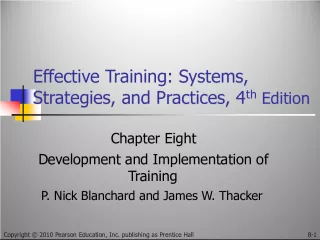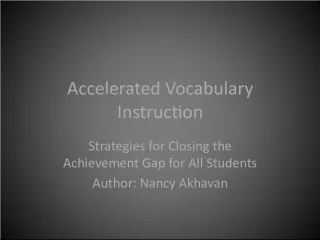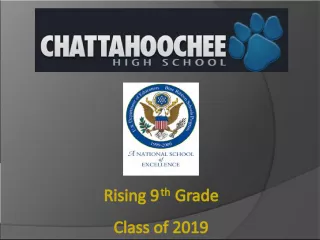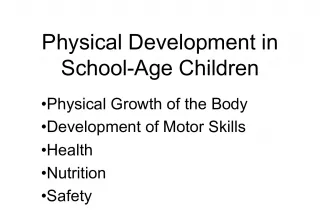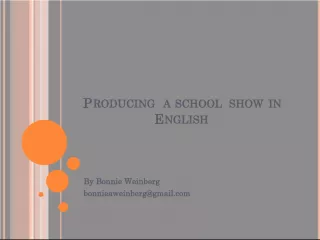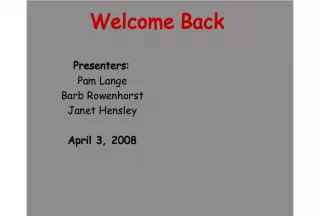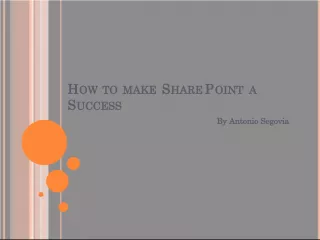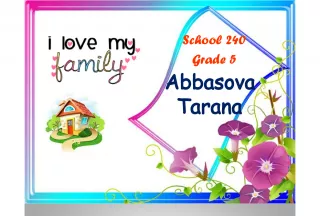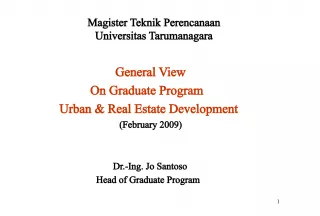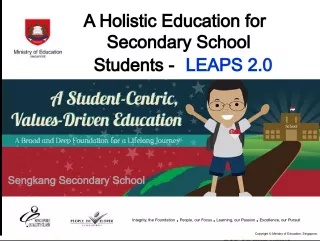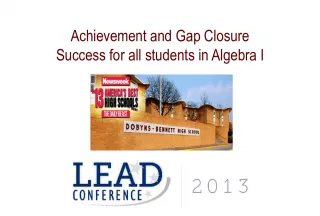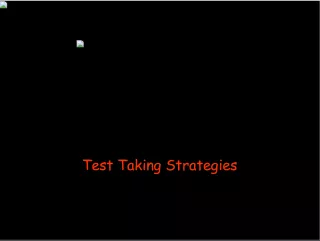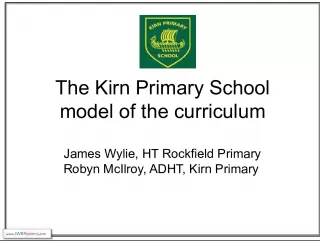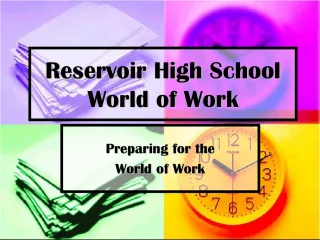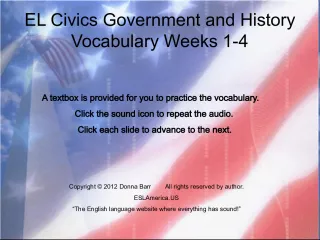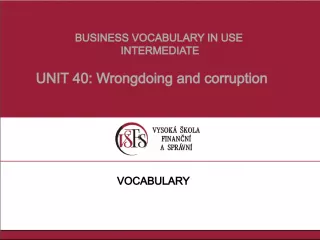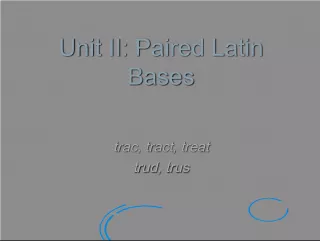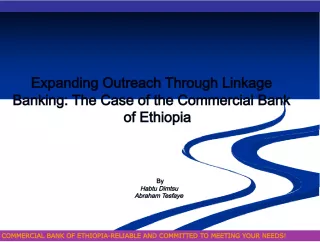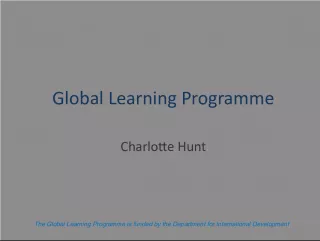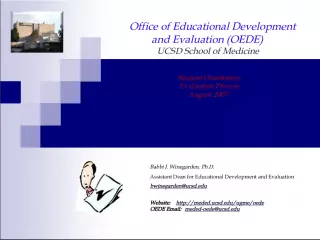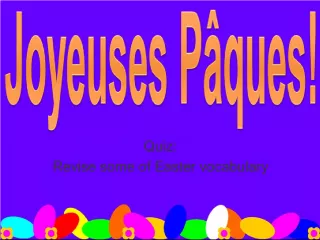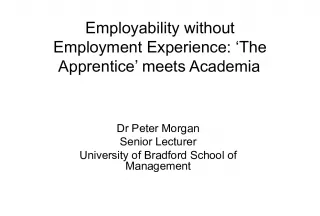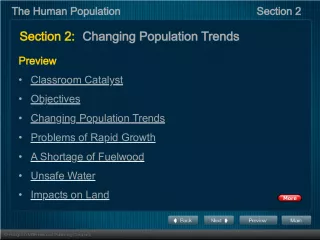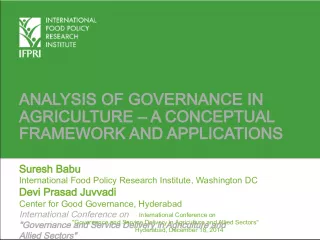Strategies for Vocabulary Development in School Success
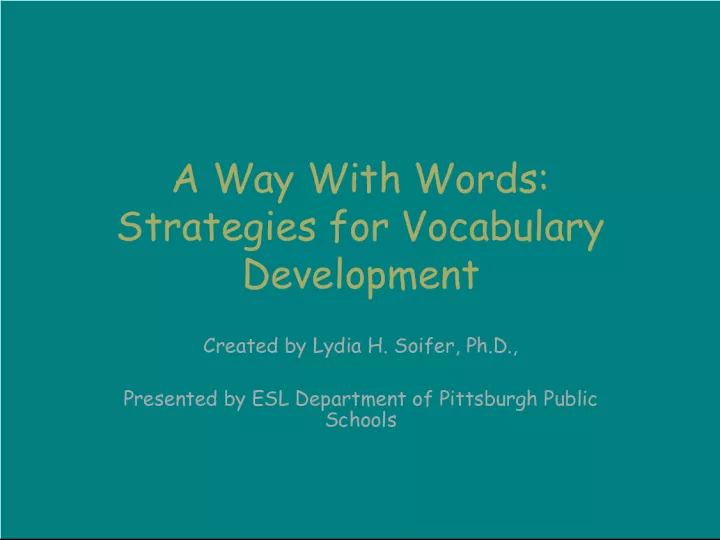

A comprehensive approach to developing vocabulary knowledge presented by Lydia H Soifer, Ph.D. in collaboration with Pittsburgh Public School's ESL Department. This program highlights the importance of word awareness and incremental word learning for improving reading comprehension, decoding, spelling, and overall academic performance.
- Uploaded on | 8 Views
-
 tania
tania
About Strategies for Vocabulary Development in School Success
PowerPoint presentation about 'Strategies for Vocabulary Development in School Success'. This presentation describes the topic on A comprehensive approach to developing vocabulary knowledge presented by Lydia H Soifer, Ph.D. in collaboration with Pittsburgh Public School's ESL Department. This program highlights the importance of word awareness and incremental word learning for improving reading comprehension, decoding, spelling, and overall academic performance.. The key topics included in this slideshow are . Download this presentation absolutely free.
Presentation Transcript
1. A Way With Words: Strategies for Vocabulary Development Created by Lydia H. Soifer, Ph.D., Presented by ESL Department of Pittsburgh Public Schools
2. About Word Learning and Knowledge • Word consciousness – A metalinguistic skill • Word knowledge is complex • Word learning is incremental • Words are heterogeneous • Definitions, context, word parts – Important – Inherent limitations
3. Vocabulary Knowledge and School Success: Some Connections • Reading comprehension, decoding, spelling • School achievement in general • Builds linguistic awareness • Enhances world knowledge • Influences conceptual and inferential reasoning
4. Good readers and poor readers • Good readers – More efficient phonological representations – Stronger lexical knowledge • Poor readers – Poorer phonological memory – Slower, less efficient word acquisition – Greater difficulty retaining and accessing phonological representations – Decoding difficulty
5. The “Matthew” Effects (Stanovich, 1986) • Students with word reading difficulties: – Read fewer and easier books – Have trouble “decoding” less familiar words – Learn fewer words through reading – Show increasing problems in vocabulary and comprehension
6. How many words do we know? • Average first grader – 6,000 words • Average high school senior – 45,000 words • The Math: – 39,000 words over 12 years – About 3,000 words a year or 10 words a day • The range: – 1,000 words a year for low achieving children – 5,000 words a year for high achieving children
7. Model of vocabulary acquisition (Litowitz, 1971) • Stage 1 – Non-verbal or verbally semantically “empty” • Stage 2 – Responds with word associated to original stimulus word • Stage 3 – Concrete example of experience associated with the stimulus word • Stage 4 – Demonstrates awareness of definition form • Stage 5 – Pure definitional form
8. Four Stages of Knowing a Word (Dale, 1965) • Stage 1 – Never saw/heard it before in my life! • Stage 2 – Heard it, but don’t know what it means. • Stage 3 – I recognize it in context or it has something to do with… • Stage 4 – I know it and can use it properly!
9. Qualitative Dimensions of Word Knowledge (Cronbach, 1942) • Generalization • Application • Breadth • Precision • Availability
10. Goals of a Lexical Learning Program • To improve lexical knowledge and flexibility • To improve word sense • To improve reading comprehension and written language • To improve word retrieval • To develop strategies for vocabulary organization • To develop a lifelong love of words
11. What does it mean to KNOW a word? • A preliminary definition – Read/decode a word – Understand its meaning and use – Use it in oral response – Use it in written work • Levels of word knowledge – Unknown – Acquainted – Established
12. Semantic Processes in Reading Comprehension • Accuracy • Fluency • Richness • Deep Contextualized Knowledge
13. Properties of Effective Vocabulary Instruction • Direct Instruction is most effective • Integration • Repetition • Meaningful Use
14. Characteristics of a “Word Rich” Classroom • The Classroom – Clear, physical signs of word awareness – Word charts or word walls – Books on words, word play, thesauri, dictionaries – Labels – Word games, puzzle books, software
15. Characteristics of a “Word Rich” Classroom • The Teacher – Is excited about words and word learning – Has FUN with words – Creates “word of the day” activities – Children know the teacher loves words – Understands the difference and connections among spelling, phonics and vocabulary – Creates the foundation for independence – Facilitates the use of strategies
16. In a “Word Rich” Classroom • Foundation for Independence Created – Students are enthusiastic about words and word learning – Reading is a part of every day – Students can identify a preferred word game or activity – Students have word banks, personal dictionaries – Thesauri and dictionaries are used frequently – Students use strategies when facing unknown words (e.g., word parts, context)
17. In a “Word Rich” Classroom • Teachers Facilitate Strategy Use – Models, supports and develops strategies – Direct, interesting instruction on content area vocabulary – Uses graphics to show word meanings – Provides multiple exposures and opportunities to see, hear, write and use new words – Reading and follow-up discussions of new words – Encourages word play and motivational activities
18. So many words, so little time… • Beck, McKeown & Kucan, 2002 • A three tier approach – Tier one words – the most basic – Tier two words – high frequency for mature users; found across a variety of domains – Tier three words – low frequency and very specific • 400 Tier two words a year should do it!
19. Questions to ask yourself about WHAT words to teach and HOW to teach them • WHAT Words – Importance to understanding of text – Degree of prior knowledge – Frequency of occurrence – Multiple meaning – Need for pre-teaching; learned from context – Grouping possibilities • HOW to teach them – Incidentally, mediated support, direct instruction – Facilitate meaningful use in multiple contexts
20. Strategies, Techniques and Demonstrations • Word cemeteries • Word walls • Synonym challenges • Word banks and associated activities • Predict-o-gram • Knowledge rating systems • Exclusionary brainstorming • Attribute webs • Semantic continuum • Word maps • Concept ladders • Definition maps • Context Essential, Text General and Incidental Word Charts • Label, Group, List – Thinking in Categories
21. Creating “SPARKLE” • Richness of Vocabulary • Literate Language Style – Conjunctions – Elaborated noun phrases – Mental and linguistic verbs – Adverbs
22. Words for a Literate Lexicon (based on Nippold, 1993) • Words for technical and curricular activities • Verbs for cognitive and linguistic processes – Metacognitive – Metalinguistic • Verbs with presuppositional aspects – Factive – Non-factive
23. A Basic Five Step Approach (Blachewicz, 1986) • Activate prior knowledge • Make connections among words and topics • Use both spoken and written contexts • Refine and reformulate meanings • Use the words for writing and additional reading
24. Supporting Developing Word Knowledge in the Classroom • Repeat in various contexts • Describe words • Support with visuals • Connect to students’ lives • Extend meaning with anecdotes • Make associations • Give definitions • Compare and contrasts • Question • Chart characteristics • Rephrase sentences • Analyze structure • Provide tactile examples • Give examples of correct and incorrect use
